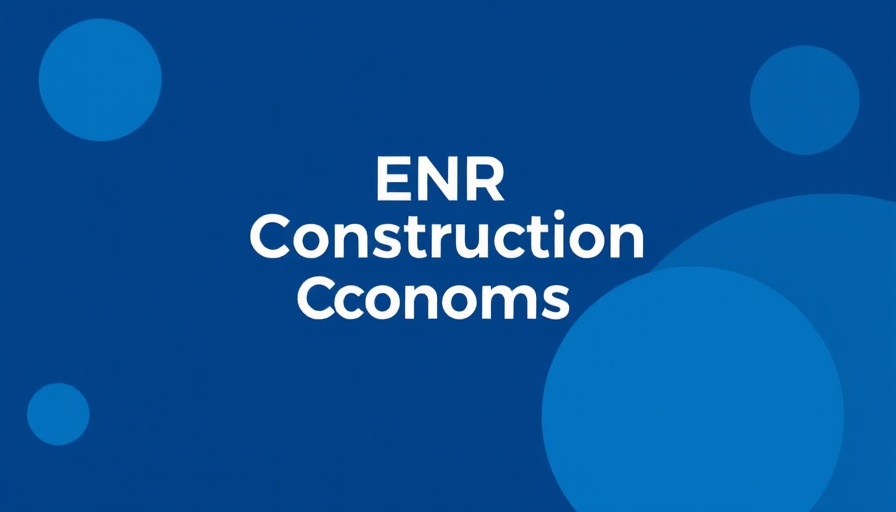
The Evolving Landscape of Construction Economics
As we near March 31, 2025, the realm of construction economics is undergoing notable shifts influenced by various economic trends. For clients of commercial construction companies, understanding these dynamics is essential for ensuring project efficiency, controlling costs, and achieving quality outcomes. A mixture of market demand, labor availability, and input costs plays a pivotal role in shaping this landscape.
Factors Impacting Construction Costs
One of the primary drivers of changes in construction economics is the fluctuation in material prices. Over the past year, we have seen significant increases in costs for key materials such as steel and lumber, largely influenced by supply chain issues and global demand. According to recent trends, these costs are expected to stabilize but remain volatile, emphasizing the need for precise budget planning and flexible procurement strategies.
The Importance of Labor Availability
The labor market within the construction industry is also critical. A shortage of skilled labor has led to increased wages, which can significantly impact project budgets. A report highlights that ~60% of construction firms are struggling to find qualified workers. This trend underscores the necessity for construction companies to invest in training programs and retention strategies to maintain a capable workforce that can deliver quality projects.
Leveraging Technology for Efficiency
Technology is proving to be a game-changer in construction. The rise of Building Information Modeling (BIM) and project management software allows companies to improve project oversight and resource allocation more efficiently. By adopting these technologies, firms can reduce project timelines and costs while enhancing collaboration among project teams, which is particularly valuable in today's fast-paced environment.
The Impact of Economic Indicators on Construction
Monitoring economic indicators such as GDP growth and interest rates plays an essential role in forecasting the future of construction economics. As interest rates fluctuate, so too can the availability of financing for new projects. This relationship highlights the importance of closely following economic trends to make informed decisions regarding investments in construction projects.
Planning for Future Economic Trends
Recognizing the interconnected nature of these factors allows construction clients to prepare for upcoming trends. For instance, understanding potential increases in material costs can lead to proactive actions like securing suppliers ahead of time. Additionally, considering how technological advancements can streamline operations can result in significant long-term savings and project improvements.
Your Actionable Insights
To navigate the complexities of construction economics effectively, clients are encouraged to regularly evaluate project budgets and remain adaptable. Engaging with construction experts and financial advisors can also provide valuable insights tailored to individual project needs.
In conclusion, the construction industry's future is being shaped by a confluence of factors. By staying informed and responsive, clients can make strategic decisions that enhance efficiency and ensure project success.
 Add Row
Add Row  Add
Add 




Write A Comment